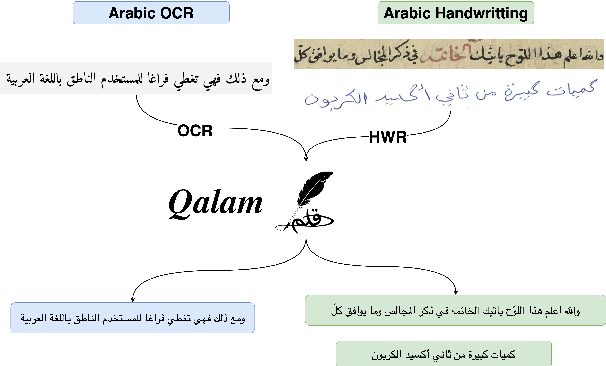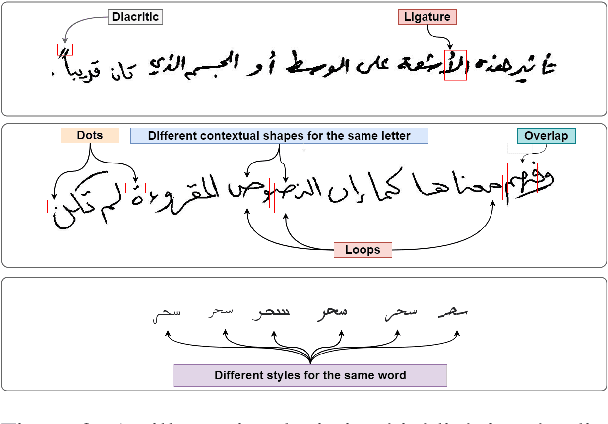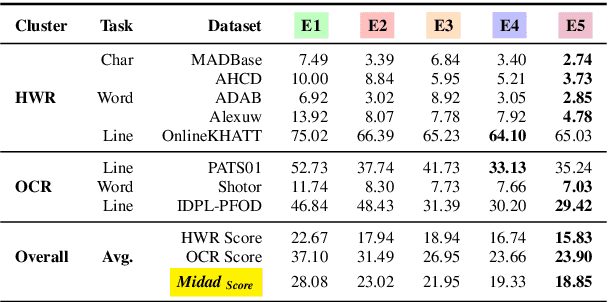Qalam : A Multimodal LLM for Arabic Optical Character and Handwriting Recognition
Paper and Code
Jul 18, 2024



Arabic Optical Character Recognition (OCR) and Handwriting Recognition (HWR) pose unique challenges due to the cursive and context-sensitive nature of the Arabic script. This study introduces Qalam, a novel foundation model designed for Arabic OCR and HWR, built on a SwinV2 encoder and RoBERTa decoder architecture. Our model significantly outperforms existing methods, achieving a Word Error Rate (WER) of just 0.80% in HWR tasks and 1.18% in OCR tasks. We train Qalam on a diverse dataset, including over 4.5 million images from Arabic manuscripts and a synthetic dataset comprising 60k image-text pairs. Notably, Qalam demonstrates exceptional handling of Arabic diacritics, a critical feature in Arabic scripts. Furthermore, it shows a remarkable ability to process high-resolution inputs, addressing a common limitation in current OCR systems. These advancements underscore Qalam's potential as a leading solution for Arabic script recognition, offering a significant leap in accuracy and efficiency.
 Add to Chrome
Add to Chrome Add to Firefox
Add to Firefox Add to Edge
Add to Edge